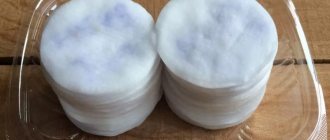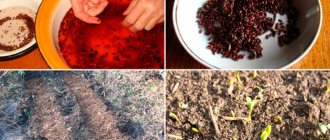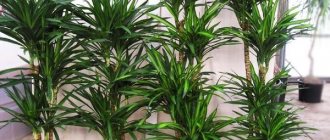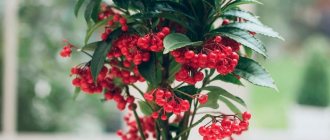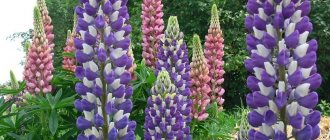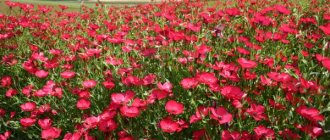In recent years, alternative options have appeared for purchased Christmas trees. A good half of gardeners have already appreciated the benefits of decorative Christmas trees, which delight with a fresh aroma and refresh the air in the house, and then on the site. This is the main advantage of miniature beauties, which feel good indoors until spring, and then move outdoors. Coniferous plants in containers are not monotonous; buyers usually have plenty to choose from. True, it is necessary to take into account the characteristics of a particular variety, which will be correctly indicated in any nursery.
Variety selection
When choosing mini-Christmas trees , you should remember that this is planting material and the appropriate requirements must be presented to it. As in the case of purchasing a seedling, you should immediately decide where the ornamental tree will grow in the future and whether the proposed conditions are suitable for it. It is important to know what type of conifer it is and whether it can be planted in the ground in your climate.
Farmers in the northwestern territories and central Russia can safely purchase the following varieties of conifers:
- spruce or European spruce;
- blue, white or Canadian spruce;
- prickly spruce;
- spruce bud;
- Serbian spruce.
These may be some varieties of cedar pines (European, Siberian, common) and fir (graceful and Siberian).
Junipers and thujas in containers are also used as decorative Christmas trees.
Particularly popular among gardeners is Konica, a dwarf decorative form of Canadian spruce. It is extremely attractive and easy to care for, which is why today it is cultivated all over the world, including in Russia. Its miniature size is of particular value in the eyes of gardeners, since this quality makes it possible to plant a tree even in the smallest areas.
How to prepare and select seeds for sowing?
Growing spruce from seeds is the most reliable way. The seed material must be of good selected quality, which can be purchased at the nursery, or you can get it yourself from the fruit of the spruce - cones. Cones are collected in mid-February, since during this period the seeds are considered especially valuable. The collected cones are placed in a fabric bag, which must be placed next to the battery. After a few weeks, the dried cones open, creating free access to the spruce grains. Next, the seeds must be carefully rubbed together to free them from the lionfish, rinsed under warm water, getting rid of any greasy film that can form due to the released essential oils. At the end of the preparation, the seeds are dried.
To provide planting material with complete protection from microbes, it is washed with weak potassium permanganate, wiped with a cloth, placed in a glass jar that closes tightly and sent to the refrigerator. The freezer provides seeds with conditions similar to their native ones. They are hardened here, undergoing stratification, which improves germination.
Mandatory plant inspection
This procedure will save the buyer from possible failures . A small tree should be fresh, its branches ─ elastic, and its needles ─ shiny.
The fact that the plant spends its “childhood” in a container is even good: this is the key to successful wintering and successful transplantation. But provided that it has a healthy root system. This can be checked by carefully lifting the tree along with a lump of earth. The soil is braided with white small roots ─ that means everything is in order.
You should also pay attention to the container in which the plant is located. Its size should correspond to the crown of the tree. Very small pots are evidence that growth stimulants were used, and this will have a negative effect in the future when transplanting into open ground.
Caring for a Christmas tree in a container at home
A small Christmas tree in a pot will have to spend a lot of time at home. She will grow slowly, you need to care for her constantly and according to all the rules.
for growing ornamental plants . In winter, the Christmas tree is supposed to rest, and the air temperature should not be more than ten degrees. Therefore, the best way out of the situation is to accommodate the guest not in a warm room, but, for example, on a glassed-in balcony. Even at temperatures below zero, she will feel good.
Important! It is necessary to monitor the condition of the soil in the pot: it should not freeze.
If the balcony is heated on cold days, you need to raise the pot on a special stand so that the heat does not reach the roots of the plant.
Most of all, conifers love diffused light. Once a week, the pot with the Christmas tree needs to be turned so that all the needles receive the required amount of light. If this is not done, on one side of the plant the needles will turn yellow and fall off.
If all the windows receive bright sunlight, you will have to make protection between the tree and the window glass in the form of a white paper sheet. This is especially necessary in February and March, when the sun's rays are particularly active. Their influence has a bad effect on the well-being of the Christmas tree.
The air in the room where the plant is located should be quite humid. This is necessary for coniferous crops that come from forests located in swampy areas.
To humidify the air, you can spray the tree with a spray bottle. It is also advisable to always have a container of water in the room.
As for the soil in the container, it needs moderate watering. Roots react equally poorly to dry soil and waterlogged soil. One to two waterings per week can be considered the norm. The soil should always be moderately moist.
To prevent the soil from drying out, it is advisable to cover it with a paper sheet, which allows air to pass through but limits the evaporation of moisture.
For irrigation, it is recommended to use only warm, well-settled water.
Important! If you water the soil excessively, the root system will begin to rot, and the crown of the tree will turn gray. It will no longer be possible to restore the health of the tree.
It may happen that a decorative Christmas tree suddenly begins to grow actively. This is a bad sign. The root system will quickly weaken, and this will affect the plant’s immunity. The cause is usually elevated room temperature. In this case, you need to moisten the soil in the pot and immediately move the container with the ephedra to a cold room or to the balcony.
I would like the decorative Christmas tree to be a lush tree of symmetrical shape. To do this, pruning is carried out in early spring. The procedure consists of shortening bare long branches and giving the crown a natural shape.
Pruning is intended not only to give an attractive appearance to a miniature plant, but also to stimulate branching.
Branches are pruned under the joint , from which other branches should come in the future.
Important! A weak tree should not be pruned, as it will not have enough strength to recover and it will begin to dry out.
Once a year, in early spring or late autumn, the conifer in a pot should be fed. The choice should be made in favor of nitrogen fertilizers.
You can use dry granules, add them to the ground next to the trunk and water immediately. But the best option is soluble mineral fertilizers. One tree will require 15 grams of them.
Several drugs that have a good effect on the development and growth of conifers:
- Epin;
- Hall;
- Zircon;
- NV-101
- Kemira.
Your actions after the holiday
Regular felled trees are often removed at the end of January. But if you want your live Christmas tree to take root in the garden, then you should not keep it in your apartment for longer than a week. After the holiday, remove all toys and decorations from it, water the tree well and place it on a glassed-in balcony. The temperature also needs to be lowered not immediately, but gradually. Protect the needles from direct sunlight. If your balcony is cold and the temperature on it is kept below zero, the container with the Christmas tree must be insulated. Wrap it in a layer of foam rubber or cover it with polystyrene foam.
Set of pendants Cones 12pcs 6cm glass gold
If you have such an opportunity, then it is better to take the spruce to the garden as quickly as possible. In a snowy winter, simply bury the tree on the shady side near a wall or fence in a snowdrift.
Planting in open ground
Conifers are found in areas in various compositions . They are even placed in containers on the roofs of houses, not to mention terraces, lawns, and hedges. The decorative form of young trees enlivens rock gardens and flower beds. But they look especially harmonious in company with other low-growing conifers. It is best to move decorative Christmas trees in February or March, and in the northern regions, when the ground thaws. To transplant from a container, it is advisable to choose a cloudy day.
To move a decorative Christmas tree, you need to prepare in advance: choose a place, decide on a time, dig holes, prepare a soil mixture for filling in the holes, stock up on mineral fertilizers, and water for irrigation.
The planting process itself should take place in the following sequence:
- Drainage is poured into the hole, then prepared soil. All this is watered abundantly.
- The plant is carefully removed from the container so as not to damage the root system and lowered into the hole.
- The trunk of the plant should be well aligned.
- Fill the voids with prepared soil mixture.
- Fill the filled hole with water (at least 10 liters per hole).
- Make a small hole next to the trunk for future watering.
- Cover the trunk with mulch in the form of broken bricks, gravel, pebbles, and covering materials.
Important! Since the roots of the tree are close to the surface of the earth, you should not compact the soil at a distance of one meter around the tree when planting.
Rules for harvesting blue spruce branches
For cuttings, twigs from fir trees, which are from four to ten years old, are used. Such trees have the maximum percentage of cuttings survival
To prepare planting material, you need to find branches with side shoots and carefully tear off 2-3 cuttings 6-10 cm long. You need to tear them so that at the end of each cutting you retain a “heel” - a thickening, a remnant of older wood
It prevents the release of resin, which can clog the lower cells of the seedling and block the access of moisture inside the Christmas tree. That is why conifers are not cut with a knife, i.e. They do not cut, but tear.
The material is prepared on a cloudy day or early in the morning. The picked branches are immediately packed in a plastic bag so that they do not dry out, and planted on the same day. If you keep the cuttings in a root formation stimulator for 2 hours before planting, the Christmas tree will grow roots in 1.5 months. Without stimulants, this process will take 3 months or more.
Caring for decorative spruce on the site
A coniferous plant after transplantation will not require much attention and time. There is no need to do additional replanting or pruning.
If the summer turns out to be moderately dry and hot , natural precipitation is enough for the tree. But during particularly hot seasons, watering will be required at least once a week. In this case, it is advisable to spray the crown with water.
The top layer of soil may form a dry crust. Careful loosening will be required.
During the first two years, measures should be taken to protect the conifer from possible severe frosts. To do this, in late autumn it is necessary to lay a mulch layer around the trunk.
In spring there is a threat of sunburn. This can be seen by the brown color of the needles. To prevent injury, experienced gardeners in early spring wrap the tree trunk with material that diffuses light and at the same time allows the plant to breathe.
Reproduction methods
Young home Christmas tree
The plant reproduces in two ways:
Using seeds. In order to grow a forest beauty from seeds, you need to use pre-collected seeds from fir cones. They are collected from mid-October to the very end of winter.
The seeds are not sown deeply in the flower pot: about 1.5 cm to the edge of the soil surface. During the rooting period of seeds, the container is placed in a cool place. After a year, the seedlings will reach a height of 15 to 25 cm.
Using cuttings. According to experienced gardeners, cuttings reaching a length of up to 12 cm are considered ideal for planting.
At the bottom of the cutting there should be a “heel” or a convex part of the bark, due to which the development of the root system of the new plant will occur.
It is important to consider that the minimum cutting length is 6 cm. Cuttings are prepared in mid-spring. At this time, sap flow begins in the coniferous plant. This indicates that it has fully recovered after a long winter and is saturated with valuable substances necessary for development.
When propagating a Christmas tree by cuttings, use a substrate that includes universal soil, peat, sand and perlite.
After planting, it is recommended to cover the cuttings with a special polyethylene film for a week. It is important to take into account that practically no air penetrates under the film, and therefore it must be regularly opened slightly and the young plants allowed to ventilate.
Using the above methods of plant propagation, you can grow a beautiful decorative spruce on your windowsill.
Conifer diseases
Coniferous ornamental plants are susceptible to infections, but timely detection of their signs and immediate treatment will help avoid dangerous consequences.
- Rust. It appears as orange coatings on the branches. The needles turn yellow and fall off. Weekly treatment of the crown with drugs such as Glyocladin and Vectra will help.
- Schutte's disease is caused by a fungus. Signs: the needles become covered with a white coating, darken and crumble. If the situation is not neglected, the plant can be cured by first spraying it with a solution of copper sulfate, then treating it with Alirin-B and Trichodermin.
